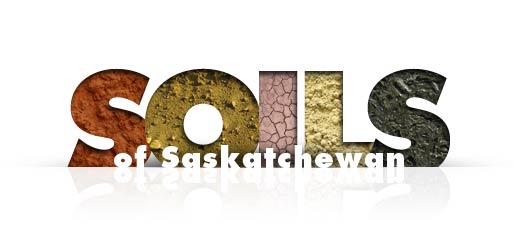Soil classification involves placing soils into well defined groups based on readily observable properties. When describing soils in the field they are divided into distinct layers (called horizons) and the placement of soils into soil classes is based on the diagnostic features of the different horizons.
Soil properties and horizons develop over time in response to environmental controls. One of the early soil surveyors on the Prairies, J. Ellis, stated that seven environmental factors controlled the rate of soil formation and the type of horizons that result: climate, vegetation, the parent material the soil forms in, topographical position of the soil, presence or absence of groundwater in the soil, the length of time the soil has been developing, and the soil-altering effects of human use of the soil. These factors control the type and intensity of soil-forming processes that occur and the horizons that result from these processes.
The Canadian System of Soil Classification has four main levels. The highest level is the Order, which is based on the properties that reflect the general nature of the soil-forming environment and the effect of the dominant soil forming process on soil horizons. Each Order is further subdivided into Great Groups, which reflect the effect of differences in the strength or intensity of the dominant soil-forming process on horizonation.
For example, the dominant grassland soil order in Saskatchewan is the Chernozemic Order, which reflects a grassland environment and below-ground additions of soil organic matter (SOM) to the soil through the root system of the grasses. The Great Groups of the Chernozemic Order (Brown, Dark Brown, Black, and Dark Gray) are based on the colour of the surface horizon, which in turn reflects the amount of SOM stored in the soil.
The Subgroup level is a subdivision of the Great Group and recognizes horizons that are transitional to other soil orders and any special features within the sequence of horizons (called the soil profile). The soil Series is the finest level, and is assigned to a particular soil subgroup occurring on a specific soil parent material.
Great variation in soil series can occur over very short distances in the field, and soil surveyors use Soil Associations to group together genetically related soils on a similar parent material. These associations are concise yet useable map units for understanding soil distribution in the field. In Saskatchewan the soil Associations are typically named after the closest town to where a particular soil assemblage was first described.
Click the Orders in the menu to learn more about each one.
